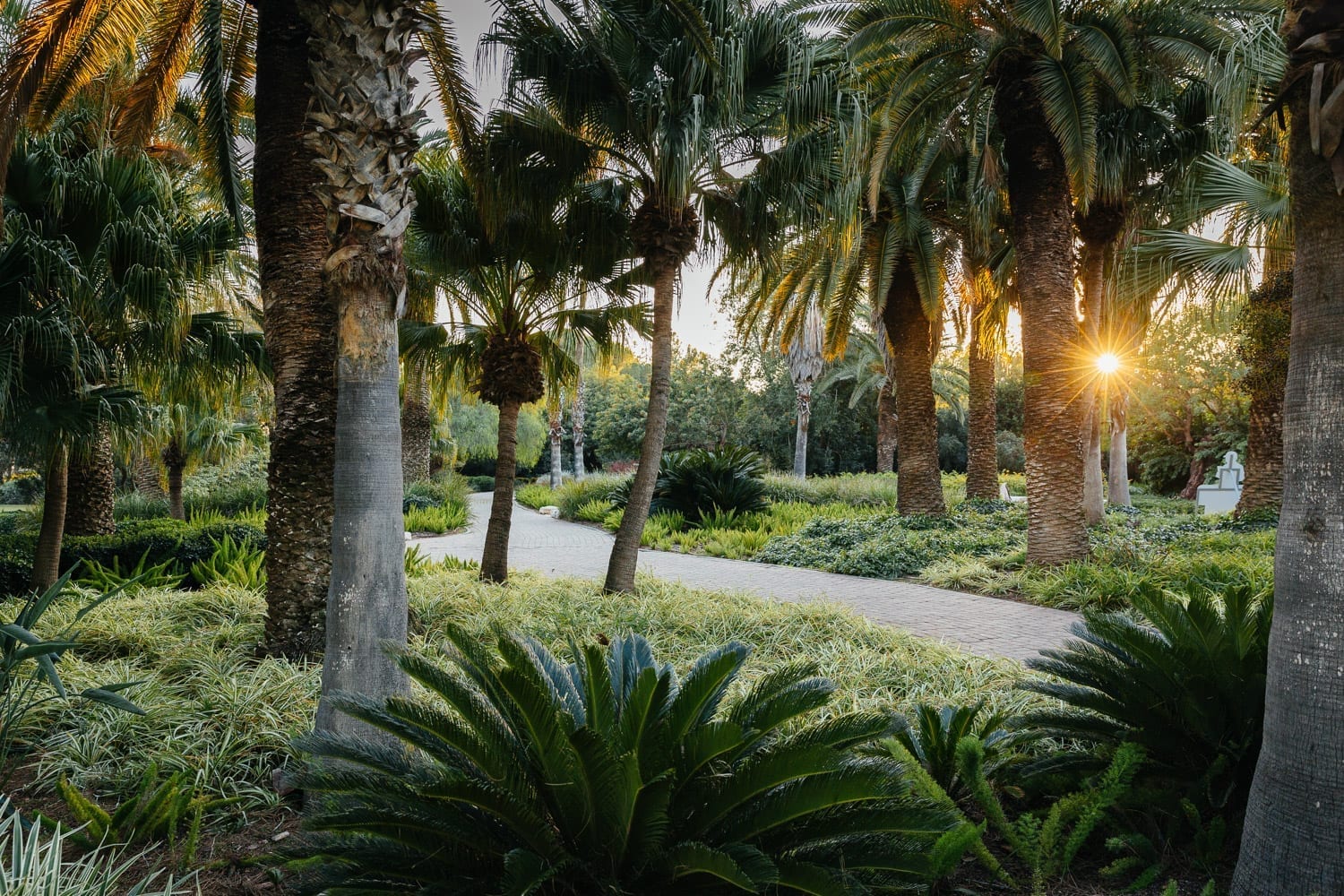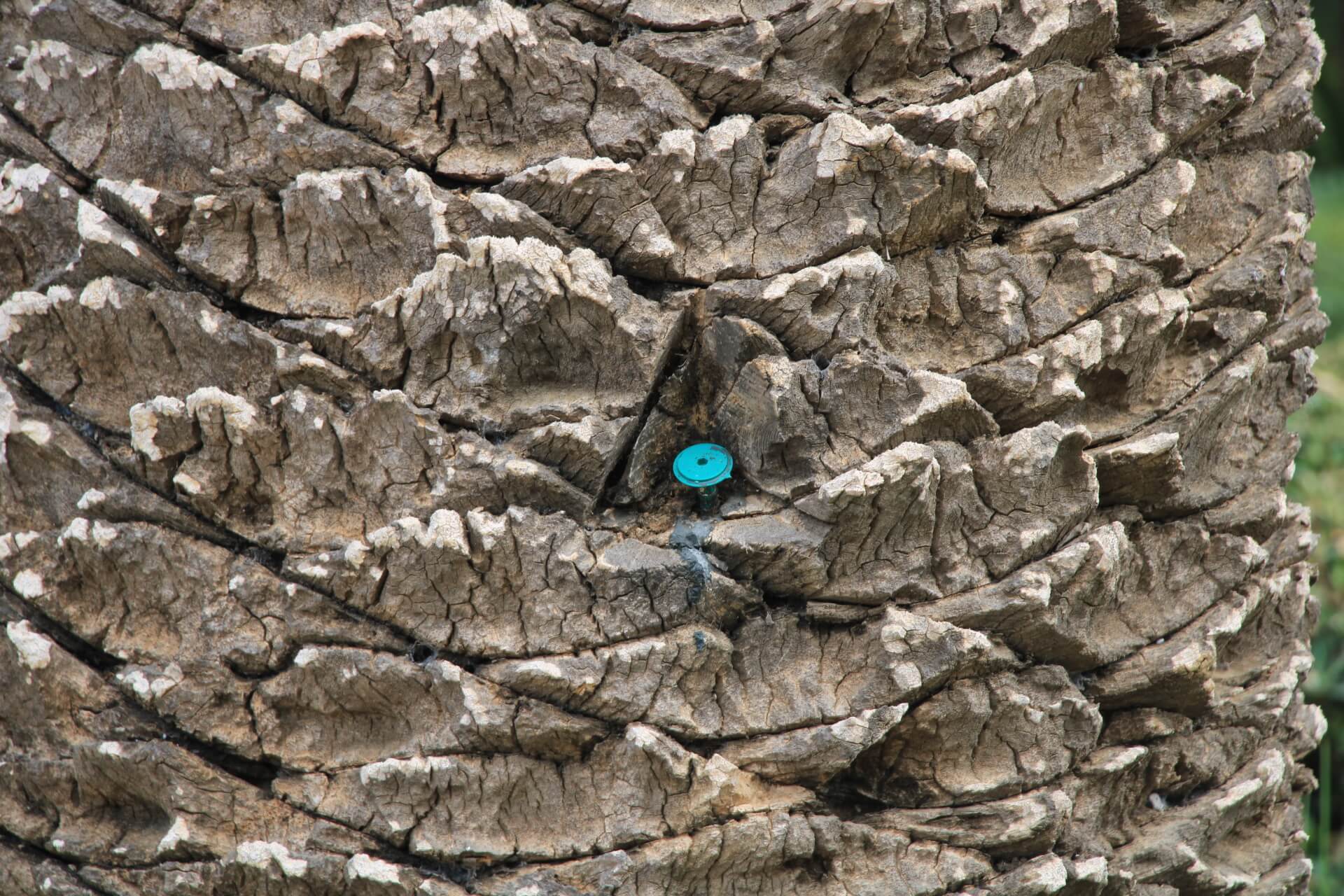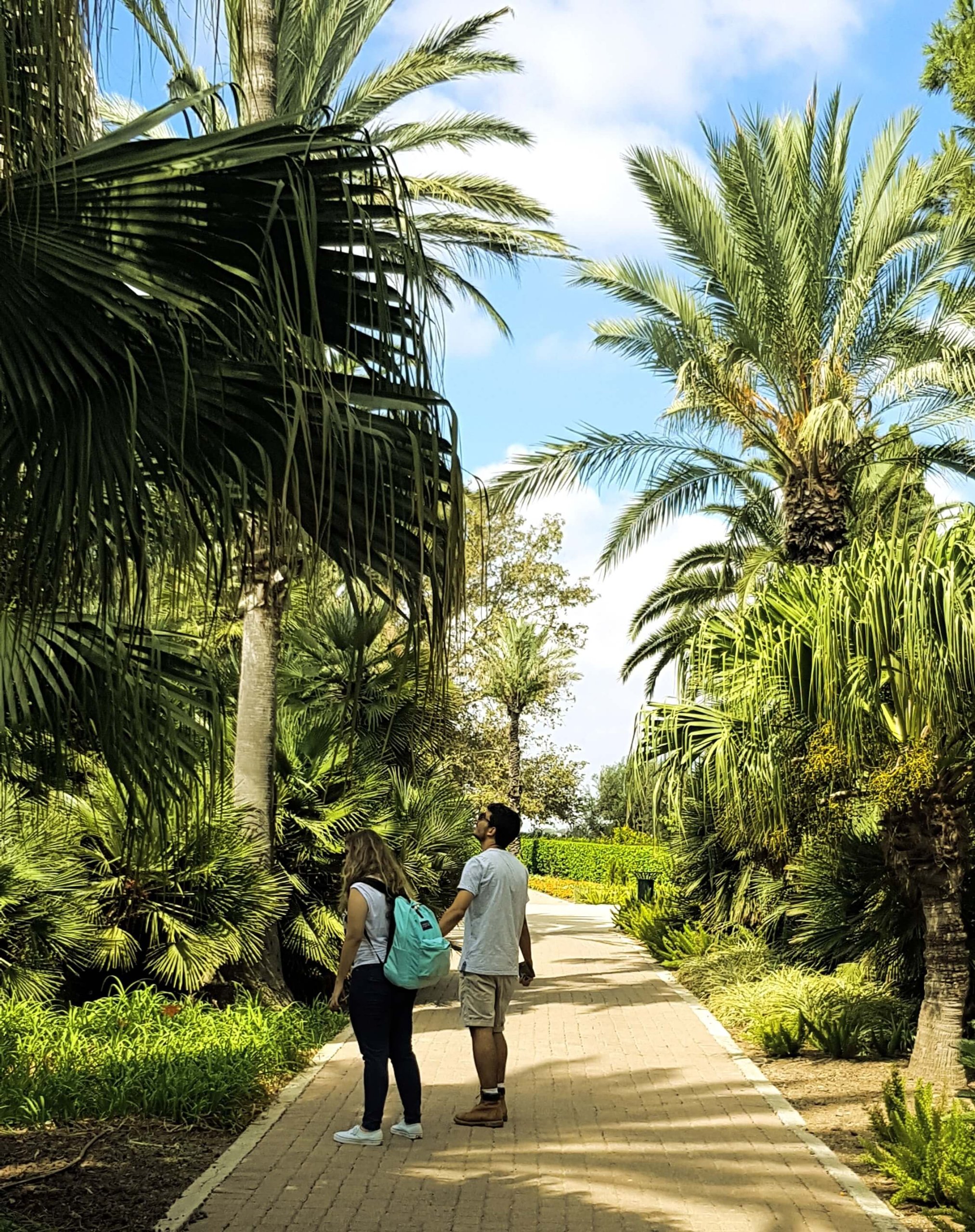The Mysterious Button of the Palm Trees
Reading time: 3 Min.
The month of Tishrei is a time to talk about palm trees. Their fronds are a popular choice for thatching sukkahs.
Plus, we’re embracing some cool tech to tackle the red palm weevil.
 News and Events
News and Events
Reading time: 3 Min.
The month of Tishrei is a time to talk about palm trees. Their fronds are a popular choice for thatching sukkahs.
Plus, we’re embracing some cool tech to tackle the red palm weevil.

At our park and garden, we care for our palm trees with dedication and cutting-edge scientific methods. As we prepare for the harvest festival, when courtyards and balconies fill with sukkahs, we’d like to share some insights on the care our date palm trees receive (the Palm Garden includes both date palms and Canary Island date palms), and discuss what constitutes kosher thatching.
In the Memorial Gardens, we take pride in our diverse collection of palm species and palm-like species, of which only the date palm grows wild in Israel. Did you know there are about 200 types of palms out there, with around 3,500 evergreen varieties? They can reach impressive heights—some grow up to 20 meters tall.
While they thrive in tropical climates, they also do well in desert areas where water is available. Historically, date palms have been vital for the Israelites, providing food, shade, and materials during their desert travels.
Unfortunately, these beautiful trees face threats from the red palm weevil, an invasive pest that snuck in from Asia via Africa. The weevil lays its eggs on the tree, and when the larvae hatch, they feed on the internal tissues of the palm. As a result, it is eaten up from the inside, dries out, and collapses. Since the damage is internal, it is not always visible to the eye, and by the time it becomes noticeable it’s already too late.

A smart sensor for early detection that reduces the need for pesticides
Today, by adopting innovation in our approach to managing the garden’s trees and constantly searching for the best solutions for the environment, wildlife, and vegetation – we use an innovative development by Agrinet, which includes a tiny sensor designed for early detection of the beetle. The sensor, which resembles a button, is screwed into the trunk of the palm tree close to the growing apex (without harming the tree). It detects movement of the beetle’s larvae inside the tree by sensing tremors at certain frequencies. During larval development or penetration of the tree by a weevil, the sensor warns the garden’s staff in real time via a dedicated smartphone app. This rapid warning allows the gardening staff to use reduced, precise doses of pesticides to treat only the infected trees, thus reducing the use of pesticides and increasing the chances of saving the trees.

The palm trees in the Memorial Gardens also include fan palms (Washingonia), which were planted along many avenues in the moshavot established by Baron Rothschild, and still stand tall today. Fan palms, in contrast to date palms, are less sensitive to the red palm weevil and do not have sensors installed on them.
Alternatives for Sukkah Thatch
When we imagine a sukkah, the first picture that enters our mind is a sukkah with a roof of fronds from a date or other palm tree. Date fronts provide comfortable, aesthetic Thatch, but sometimes they are hard to obtain due to high demand before the holiday. Here we would like to mention that kosher Thatch may also be made from branches of other trees, or you can purchase “forever Thatch” – reusable Thatch made, for example, from reeds or bamboo, that is environmentally friendly and can be used year after year.
We invite you to visit the Memorial Gardens and Nature Park during the Sukkot holiday, spend time in one of the five sukkot set up in the area and take part in a range of activities such as guided tours, children’s games, live music, a wishing tree and special planting activities in support of war victims.
Did you like it? Join our free mailing list to receive monthly news and updates about activities for the whole family. Register here.
Any question? We will be glad to help